2016 Kawasaki Ninja ZX-10R ABS First Look

More power, WSBK suspension and five-axis IMU top list of improvements
Despite winning the 2015 World Superbike championship in dominant fashion with Jonathan Rea, and the 2013 title before that with Rea’s teammate Tom Sykes, Kawasaki isn’t resting on its laurels when it comes to its aging Ninja ZX-10R platform and today announced its successor in the 2016 Ninja ZX-10R. Since the current platform’s release in 2011, its European rivals have upped the bar in the literbike wars considerably, and with Yamaha’s introduction of the new YZF-R1 last year, the battle for literbike supremacy is tighter than ever. Now, Kawasaki believes it has a contender more than able to take on this stacked field.
At first glance, the ZX-10R in these photos might appear like the current 10R, but don’t be fooled, Kawasaki insists this is an all-new model incorporating technologies taken directly from the World Superbike paddock. This includes a more powerful engine, a sophisticated electronics package utilizing a five-axis IMU and suspension never before used on a production motorcycle. Let’s delve deeper into the changes.
Engine/Transmission
The 2016 ZX-10R is still a 998cc 16-valve, DOHC inline-Four with the same oversquare 76 x 55mm bore and stroke dimensions as before, but that’s where the similarities end. To start, the engine features a lighter crankshaft and counterbalancer, the latter of which Kawasaki claims damps vibrations as well as before. The crank’s connecting rod journals feature new coatings for reduced friction.
From there, the cylinder walls’ thickness is increased for greater durability. The pistons themselves are new and cast from a heat-resistant alloy, also for durability. Shorter piston skirts (37.7mm vs. 39.2mm) help reduce the weight of each piston 5g and are coated with a dry-film lubricant for reduced friction at low rpm. Intake and exhaust ports now have a straighter, more direct path of travel, and for 2016, both intake and exhaust ports are polished (only the intake port was polished previously). Each combustion chamber shape has been revised, and the titanium exhaust valves have lengthened 1mm to 25.5mm. In addition, both intake and exhaust camshaft profiles see greater overlap – all of these are measures to help increase high-rpm power.
The new 10R now sees an airbox with 25% greater volume, as well as a new filter element with 60% greater surface area for more flow. Kawasaki says this achieves better low- to mid-range power. Power is controlled by new ride-by-wire throttle bodies, which facilitate the electronic rider aids like S-KTRC traction control, the new KLCM launch control and KEBC engine braking control. More on those features later.
Finally, spent gasses exit via a lightweight exhaust system comprised entirely of titanium alloy, from headers to exhaust canister, the latter of which features 50% larger volume than the outgoing model, says Kawasaki, to reduce sound levels and overall weight. Kawasaki says the heat-resistant alloy used in the headers is unique to Kawasaki in a motorcycle application.
To further emphasize the new 10R’s track chops, the cassette-type, close-ratio transmission features gear ratios, Kawasaki says, that are “idealized for circuit riding.” Second through sixth gears are shorter than the current ZX-10R, and a dry-film lubricant has been applied to certain gears to reduce friction and help improve shift speed. Also improving shift speed is the addition of a quick shifter, or in Kawasaki lingo, the Kawasaki Quick Shifter (KQS) – a first for the ZX-10R line. Unlike systems from Ducati and BMW, KQS only operates on upshifts, and uses the same contactless sensors utilized in Kawasaki’s H2R. Overall, Kawasaki says the transmission is 130g lighter than the outgoing model. A slipper clutch comes standard.
Electronics
With the new ZX-10R, Kawasaki is finally offering electronic rider aids on par with its main competitors, all centered around a Bosch five-axis IMU with proprietary software developed entirely in-house. Specifically, the Bosch IMU measures longitudinal acceleration and deceleration, transverse or lateral forces when cornering, vertical acceleration (like when cresting a hill), lean angle, and pitch rate. Yamaha’s YZF-R1 can claim bragging rights with its six-axis IMU, but Kawasaki’s software is able to take the pitch and roll rate data from the IMU, and from there, the ECU can calculate the yaw rate, effectively resulting in six-axis operation.
What the IMU allows is the most advanced electronics suite ever on a production Kawasaki, which includes the Kawasaki Sport-Traction Control (S-KTRC), Kawasaki Intelligent Braking System (KIBS), Cornering Management Function, Kawasaki Launch Control Mode (KLCM) and Kawasaki Engine Braking Control.
What the IMU allows is the most advanced electronics suite ever on a production Kawasaki, which includes the Kawasaki Sport-Traction Control (S-KTRC), Kawasaki Intelligent Braking System (KIBS), Cornering Management Function, Kawasaki Launch Control Mode (KLCM) and Kawasaki Engine Braking Control.
Launch Control and Engine Brake Control are functions most sportbike riders are familiar with, and though traction control is, as well, each manufacturer has their own subtle ways in which they limit rear wheel slippage. In the ZX-10R’s case, there are now five modes of intervention instead of the previous three. Sensors read realtime information of wheel speeds at both ends, throttle position, and engine speed, among numerous other parameters. From there, the IMU can also account for camber or gradient based on chassis orientation relative to the track surface, allowing for optimum power output, regardless of tire wear, profile or compound.
On ZX-10R models equipped with ABS, Kawasaki Intelligent Braking System monitors several different parameters to not only prevent the wheels from locking, but also to provide minimal kickback in the lever. More importantly for those afraid of trailbraking, with lean/pitch information provided by the IMU, the Cornering Management Function also allows for a certain amount of brake pressure while leaned over. Kawasaki’s press materials don’t explicitly call this function cornering ABS – instead Kawi says the purpose of this feature is to “suppress the motorcycle’s tendency to stand up when the brakes are applied in a turn,” which lets the rider maintain their intended line instead of running wide.
Like ZX-10R’s of old, the new model has power modes, three of them in this case: Full, Middle (80%) and Low (60%). Conveniently, power output is reduced by the stated amount so the rider can better deal with the given riding situation. Modes are changed via a switch on the left handlebar for easy on-the-fly adjustments.
Chassis
To better enable the ZX-10R to handle the changes in the engine bay, the chassis has undergone some tweaks, too. Steering head pipe is now 7.5mm closer to the rider, placing more weight on the front end for better feel. In the rear, the swingarm is now lengthened 15.8mm, resulting in a 12mm longer wheelbase which should provide better stability. Additional bracing makes for a more torsionally rigid swingarm to better achieve the handling characteristics Team Green were looking to achieve.
But the big news in the chassis department revolves around the new Showa Balance Free Fork. A joint development between Kawasaki and Showa in World Superbike, this marks the first time this technology has been used in a mass-produced motorcycle. Basically, the damping valves are now located outside the fork leg in the secondary chamber, allowing the entire piston to push oil through the valves. Kawasaki says this “eliminates pressure balance fluctuations typical in conventional forks.” Compression and rebound damping adjustments are then made from the chamber, while spring preload is adjustable from the cap of each fork leg.
World Superbike tech continues at the rear of the 10R, as the Showa Balance Free Rear Cushion (BFRC, or shock to you and me) also separates the damping force chambers that house the compression and rebound damping adjusters. Like the fork, the shock features full adjustability.
Brakes
When it comes to braking power, the outgoing ZX-10R never left us wanting for more, but it certainly wasn’t tops in its field. Kawasaki is set on changing that now with the addition of Brembo M50 calipers – the same ones we love so much on the Ducati Panigale. They’re biting on 330mm discs (from 310mm previously), the same as the Ducati, and come with steel-braided lines direct from the factory. The rear gets a 220mm disc with twin-piston Nissin caliper. Keen eyes might also notice the petal-type discs seen on past Kawasakis are gone. Now it’s back to the round things. Again, ABS with Corner Management Function is optional.
Other Odds and Ends
One of the few holdovers from the outgoing model are its wheels. The 2016 ZX-10R keeps the same wheels from last year, but because of the larger brake discs, they now get angled valve stems. Bridgestone remains the standard tire supplier, but instead of the street-oriented rubber seen before, the new 10R takes a page out of the H2 and H2R’s (and Yamaha R1) playbook and gets sticky Battlax RS10 tires – 120/70-17 front, 190/55-17 rear.
Bodywork has been revised with lessons learned from the track. The screen area is larger, and the cowls have been tweaked for better aerodynamics and reduced wind buffeting at speed. The main instrument panel from the outgoing model finds its way onto the 2016 version, meaning no TFT display like Ducati or Yamaha, but the LCD screen has the option to switch from black to white, if desired. There is also an IMU indicator, as well as Launch Control, Quick Shift and Engine Braking activation, plus gear position indicator, Power Modes, S-KTRC mode (and Off), low fuel level, Economic Riding Indicator, intake air temperature, odometer, dual trip meters, average fuel consumption, instant fuel consumption and a host of indicator lamps.
Finally, when comparing specs for the old and new models side-by-side, a few dimensions stand out. First, claimed curb weight has gone up slightly, from 443.2 pounds up to 454.2 pounds on the new model. Overall length has increased (82.3 in. vs. 81.7 in.) and so has wheelbase (56.7 in. vs. 56.1 in.). Seat height is taller, too, going from 32.0 inches to 32.9 inches.
Four versions of the 2016 Kawasaki ZX-10R will be available: a standard or ABS version, in either Metallic Matte Carbon, or the Lime Green and Ebony color combo.
At press time, MSRP had not yet been disclosed.
2016 Kawasaki Ninja ZX-10R ABS Specifications | |
|---|---|
| Engine | 4-stroke, 4 cylinder, DOHC, 4-valve, Liquid-cooled |
| Displacement | 998cc |
| Bore x Stroke | 76 x 55mm |
| Compression Ratio | 13:1 |
| Fuel System | DFI with four 47mm Keihin throttle bodies, two injectors per cylinder |
| Ignition | TCBI with digital advance and Sport-Kawasaki Traction Control (S-KTRC) |
| Transmission | 6-speed |
| Final Drive | Chain |
| Electronic Rider Aids | Kawasaki Launch Control Mode (KLCM), Sport Kawasaki TRaction Control (S-KTRC), Kawasaki Engine Braking Control, Electronic Throttle Valve (ETV) and Kawasaki Quick Shifter (KQS) |
| Front Suspension/Wheel Travel | 43mm inverted Showa Balance Free Fork, adjustable stepless rebound and compression damping, spring preload adjustability / 4.7” |
| Rear Suspension/Wheel Travel | Horizontal back-link with gas-charged shock, stepless, dual-range (low/high-speed) compression damping, stepless rebound damping, fully adjustable spring preload / 4.5” |
| Front Tire | 120/70 ZR17 |
| Rear Tire | 190/55 ZR17 |
| Front Brakes | Kawasaki Intelligent Braking (KIBS), dual semi-floating 330mm discs with dual 4-piston radial-mounted calipers |
| Rear Brakes | KIBS-controlled, single 220mm disc with aluminum single-piston caliper |
| Frame Type | Aluminum perimeter |
| Rake/Trail | 25°/4.2” |
| Overall Length | 82.3” |
| Overall Width | 29.1” |
| Overall Height | 45.1” |
| Ground Clearance | 5.7” |
| Seat Height | 32.9” |
| Curb Weight | 454.2 lb |
| Fuel Capacity | 4.5 gallons |
| Wheelbase | 56.7” |
| Color Choices | Metallic Matte Carbon Gray, Lime Green / Ebony (KRT Edition) |

Troy's been riding motorcycles and writing about them since 2006, getting his start at Rider Magazine. From there, he moved to Sport Rider Magazine before finally landing at Motorcycle.com in 2011. A lifelong gearhead who didn't fully immerse himself in motorcycles until his teenage years, Troy's interests have always been in technology, performance, and going fast. Naturally, racing was the perfect avenue to combine all three. Troy has been racing nearly as long as he's been riding and has competed at the AMA national level. He's also won multiple club races throughout the country, culminating in a Utah Sport Bike Association championship in 2011. He has been invited as a guest instructor for the Yamaha Champions Riding School, and when he's not out riding, he's either wrenching on bikes or watching MotoGP.
More by Troy Siahaan



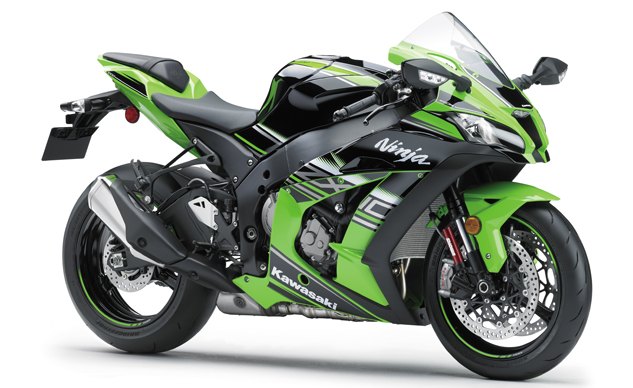
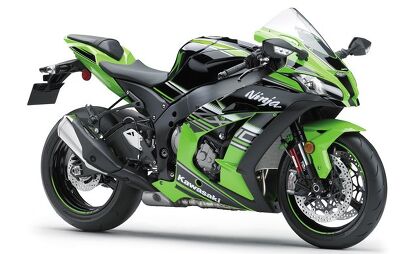


























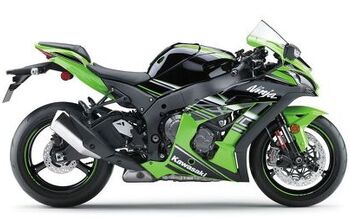
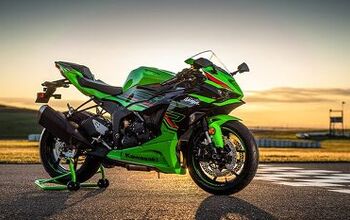

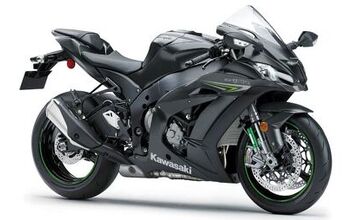











Comments
Join the conversation
Being something of a geezer, I figured my VFR would be the sportiest I would own, having got into motorcycles only in recent years. But, man, would I love to have one of these. Wonder why the Yamaha doesn't make me feel that way...guess it's Ninja nostalgia.
Sick thing is, all these bikes are an ECU reflash (to remove electronic limiting designed to keep us alive), exhaust and fueling mods away from nearly 200 hp at the wheel. Like I need that. Well, if I had one of these bikes, of course I do!